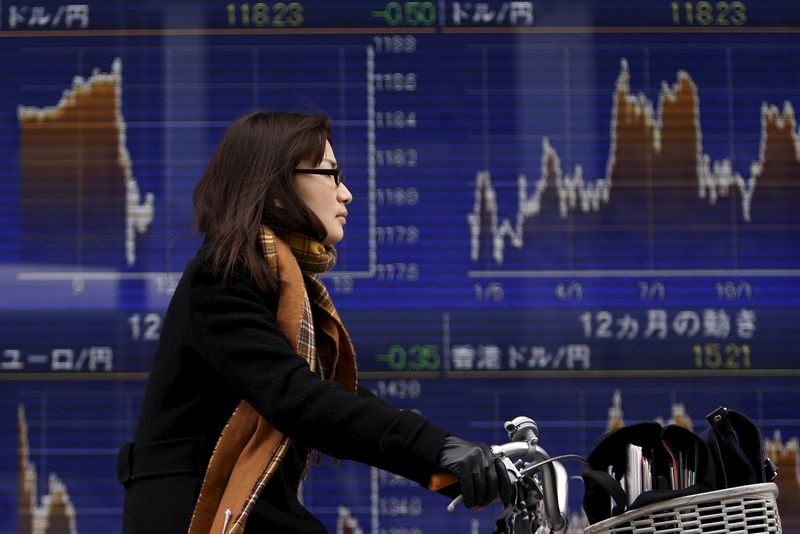This post was originally published on this site
https://i-invdn-com.akamaized.net/news/LYNXNPEC0B0BR_M.jpg © Reuters.
© Reuters.By Gina Lee
Investing.com – Asian stocks were mixed on Friday morning, ending a bumpy week with a mixed picture of China’s recovery from the COVID-19 virus.
China reported a 3.9% increase in its April from the same period last year, beating analyst forecasts prepared by Investing.com predicting a 1.5% increase. Meanwhile, Chinese in April year-on-year slid 7.5%, against analyst predictions of a 7% decrease.
China’s gained 0.02%, reversing its earlier losses, by 10:39 PM ET (3:39 AM GMT). Meanwhile the dropped 0.04%, giving up its earlier gains.
Elsewhere in the Greater China region, Hong Kong’s lost 0.35%. Japan’s also reversed earlier losses as it rose 0.05%. South Korea’s was down 0.02%.
Down Under, the rose 0.87%.
On top of the Chinese data, investors also digested a further 2.981 million Americans for the week ending May 9. This means that over 36 million Americans have lost their jobs since late March.
U.S. President Donald Trump also said overnight that he did not want to talk to Chinese counterpart Xi Jinping right now, as U.S.-China tensions continue to simmer in the background.
Some investors warned that a second wave of COVID-19 cases in countries such as China, Korea and Hong Kong could threaten the gains made by stocks as some countries loosened lockdowns and attempted to restart their economies.
“The near-term outlook is skewed to a more favorable than a negative outlook,” Stephen Innes, chief global markets strategist at AxiCorp, told Bloomberg.
“There are numerous cognizant risks to this bullish view, none more so that than a secondary global outbreak that could put the world back into another sudden stop.”
Fusion Media or anyone involved with Fusion Media will not accept any liability for loss or damage as a result of reliance on the information including data, quotes, charts and buy/sell signals contained within this website. Please be fully informed regarding the risks and costs associated with trading the financial markets, it is one of the riskiest investment forms possible.

